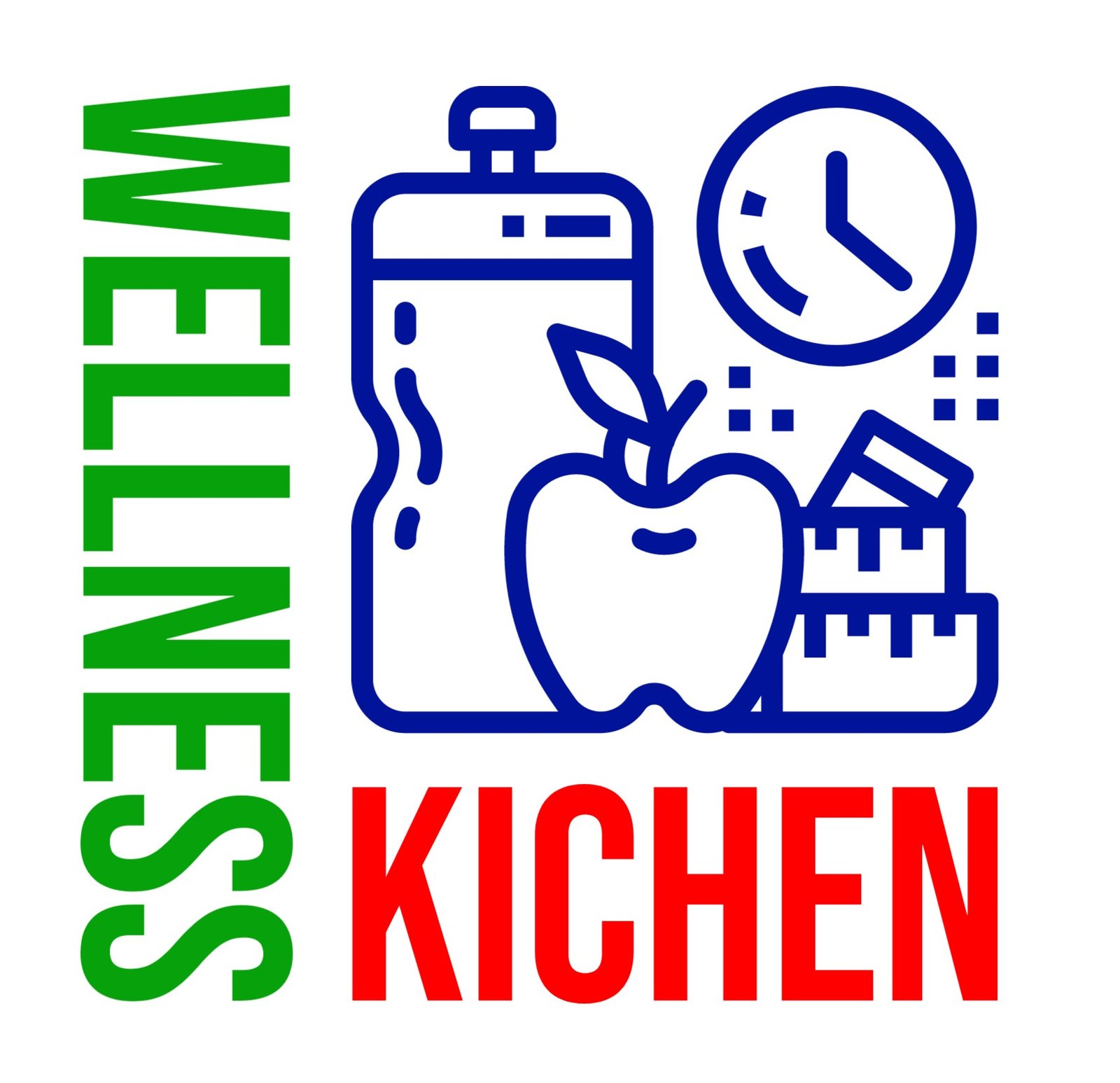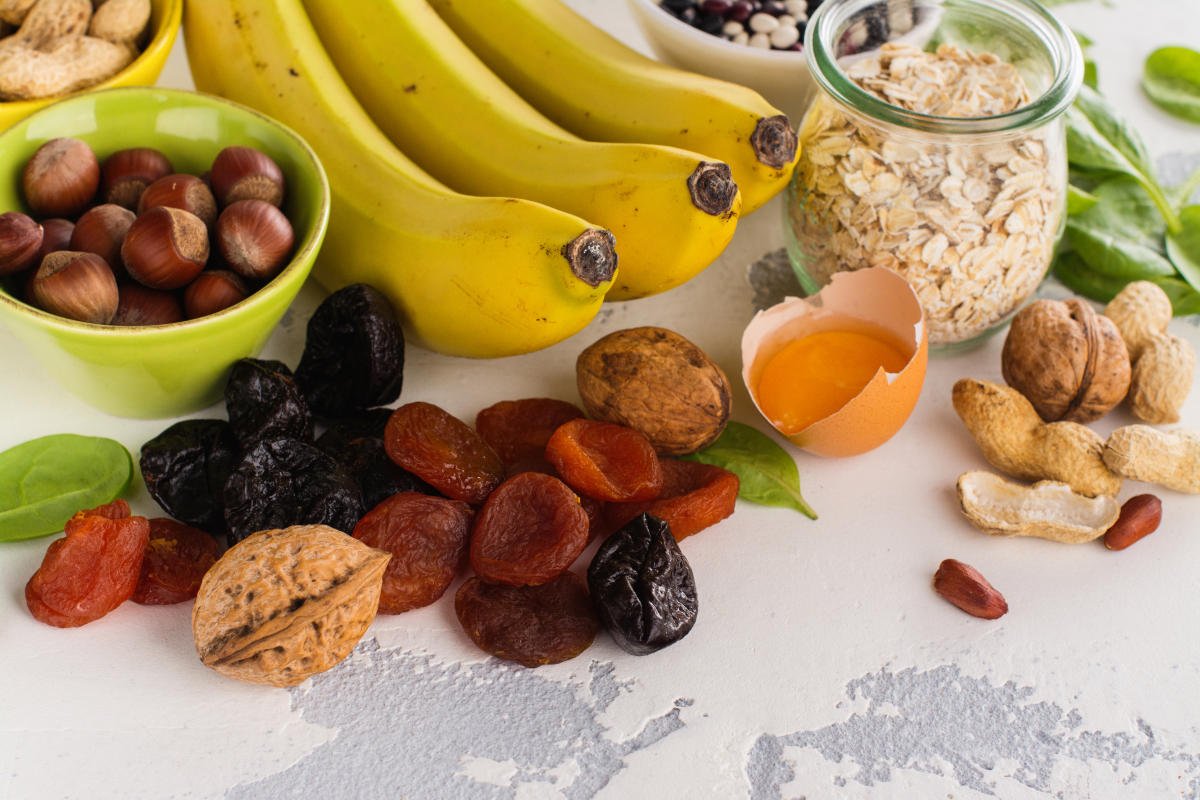Eat these high potassium foods to maintain good blood pressure and improving heart health.
You don’t need to be a fitness pro to know that electrolytes are essential to athletic performance. Gatorade commercials taught us that. But there are far better ways to get them than from a bottle of corn-syrupy fruit punch. Like from healthy, high potassium foods.
Electrolytes—such as potassium—”play a key role in hydration in our muscles and tissues, which helps with muscle contraction and relaxation, and is also crucial for muscle health and recovery.
“Adequate potassium intake is beneficial in lowering blood pressure, and intakes of this nutrient are also low among some population groups,” according to the FDA in its declaration of the revision of the nutrition label. Many Americans aren’t consuming enough potassium due to our reduced consumption of fruits and vegetables and increased consumption of processed food, as explained in a Physiologia Plantarum article. Potassium deficiencies can lead to cardiovascular disease, renal disease, kidney stones, osteoporosis, glucose intolerance, and type II diabetes.
You can keep your heart and muscles healthy and strong by adding these high potassium foods to your diet now. We used the USDA’s Food Composition Database to look up how much potassium is in a standard serving of your favorite foods. While the current recommendation for potassium intake is 3,500 milligrams a day, this number will increase to 4,700 milligrams a day in 2020 with the update of the nutrition label. For this reason, we’ve listed percent daily value based on this new 4,700-milligram number.
Next time you win the big game, you’ll be pouring lentils over the coach’s head.
HIGH POTASSIUM FOODS LISTED FROM SMALLEST TO GREATEST PERCENT DAILY RECOMMENDED INTAKE
Fresh Figs
7% DV potassium per 3 fresh figs
No, not Fig Newtons. Figs—fresh figs. While they may not help you get ripped, the nutrients they contain, including potassium, help your muscles work. They’re also a good source of fiber—providing you with 4 grams for this 3-fig serving—which will help slow digestion and keep you feeling fuller, longer. Do resist going for the dried version though, since the sugar skyrockets. For the tastiest figs, stock up between June and September when they’re in season.
Roasted Chicken Breast
8% DV potassium per 1 cup (5 oz)
Many of us get a decent amount of potassium from America’s favorite protein: chicken. This 142-calorie serving will also provide you with 27 grams of the muscle-building macronutrient.
Cherry Tomatoes
8% DV potassium per 1 cup
When you think of building strong, healthy muscles, tomatoes may not jump to the front of your mind. However, these juicy fruits are worth adding to your meal, for a more toned, healthy body. At less than 30 calories per one cup serving, they’ve got potassium, but are probably best known as an incredibly potent source of lycopene, a powerful antioxidant that promotes healthier, younger looking skin and may also fight against some types of cancer. Throw some cherry tomatoes in a Mediterranean cucumber salad, atop some romaine lettuce, or blistered and served alongside chicken.
Raw Spinach
7% DV potassium per 2 cups
Popeye’s favorite green can help you inch closer to your daily recommended intake of potassium. Eat your 2-cup serving as a salad or toss a couple handfuls of the leafy green into a delicious smoothie.
1% and 2% Milk
8% DV potassium per 1 cup
Not only is dairy milk one of the top course of bone-strengthening duo calcium and Vitamin D, but it also serves as a good vehicle for electrolytes. Milk’s carb to protein ratio is also what makes it one of the best recovery fuels after a workout.
Cooked Lentils
8% DV potassium per ½ cup
Tiny, but mighty, these little legumes offer very similar benefits to beans. Thanks to the potassium content, lentils can help prevent your muscles from cramping up. They work even more to support muscle growth and development as a solid source of plant-based protein, which helps with muscle recovery after tough workouts. Also, if you tend to be a bit impatient in the kitchen, know that lentils cook more quickly than beans, making them a more convenient choice for those nights when you just don’t have the time.
Dried Apricot
8% DV potassium per ¼ cup
Be careful with serving sizes—or else you might consume more sugar than you intend—but dried apricots will nourish your muscles with 378 milligrams of potassium in just a quarter cup.
Banana
9% DV potassium per 1 medium fruit
Well, we couldn’t not include bananas on our list of high potassium foods! Trainers and fit-minded folks go ape over this nearly-perfect pre and post-workout fruit, and they’re right to do so. One banana clocks in at only 105 calories, and can give you just enough energy (thanks to the carbohydrates) to get through your workout without being weighed down by, say, a protein shake. They’re also a great source of fiber and naturally a little sweet, so they’ll fill you up and satisfy sweet cravings the healthy way.
Cantaloupe
9% DV potassium per 1 cup, cubed
Hot weather calls for cool, refreshing foods, and cantaloupe should be at the top of your list. Juicy, light and extremely high in water content, the melon is hydrating, with potassium an added workout bonus. The fruit is also particularly low in calories. Next time you think your store-bought fruit salad has just a bit too much, dig in instead.
Orange Juic
9% DV potassium per 1 cup
While one medium banana serves up 422 milligrams of potassium per fruit, an 8-ounce glass of orange juice will provide you with 443 milligrams! Who would have guessed that the fruit glorified for potassium would be unseated by this citrus fruit.
Avocado
10% DV potassium per ½ avocado
As the reigning king of the fats that help fight fat, avocado is a rich source of potassium, in addition to healthy monounsaturated and oleic fatty acids, which may actually help spot-reduce belly fat. What’s more, the fiber-rich guac-and-roller also boosts the healthful properties of other fresh veggies when paired together. Research shows that by adding healthy fats like avocado to produce-rich dishes like salad, you can boost your body’s absorption of the nutrients available.
Cooked Brussels Sprouts
11% DV potassium per 1 cup
They’re the go-to joke—every child’s worst nightmare—but avoiding them now would be, well, childish. Besides the potassium, they encourage weight loss as a high-fiber, low-calorie food. Whether you roast or steam these green veggies, just be sure to avoid overcooking—that’s when you get hit with that unpleasant sulfur smell.
Cooked Beets
11% DV potassium per 1 cup
They’re underground and underdogs—the veggie often least bought. But beets are low in calories, high in fiber and rich in the mineral iron. Like potassium, iron is another mineral that is crucial for proper muscle function because it boosts blood flow to your muscles, increasing their efficiency. And they’re not hard to cook. Trim both ends of the beet, toss in a small amount of olive oil and roast at 450 degrees F until tender. Then slice and pair them with some mint and goat cheese as a small salad, or as a side to a lean meat dish.
Canned White Beans
13% DV potassium per ½ cup
Beans, beans, they’re good for your heart—and also your skinny jeans. Legumes like white beans are an inexpensive, virtually fat-free source of potassium, protein and gut-filling fiber. One half-cup of beans provides your body with about seven grams of easy-to-assimilate protein—equal to the amount in about one ounce of chicken. The protein content combined with the high dosage of fiber will help slow digestion and work to stabilize blood sugar. As a result, pinto beans can help prevent unhealthy cravings and encourage regular, healthy bowel movements, which will translate into a slimmer, healthier you.
Butternut Squash
12% DV potassium per 1 cup
For just 82 calories, butternut squash will fill you up with a good source of potassium and nearly 7 grams of fiber. Bake this bad boy in the oven and serve atop an arugula salad or alongside quinoa and chicken.
Canned Tomato Sauce
15% DV potassium per 1 cup
One of the most convenient forms of potassium in our diets is probably canned tomato sauce. Toss a cup over some lentil penne or use it as a base for cauliflower crust pizza to reach your potassium requirements for the day.
Cooked Spinach
18% DV potassium per 1 cup
Remember how you’d have to eat two whole cups of raw spinach and only get 7 percent of your DV of potassium? Cook those cups down and you’d get 36 percent for the same volume!
Acorn Squash
19% DV potassium per 1 cup, cubed
More than a centerpiece on the Thanksgiving table, these potassium-rich gourds—which include acorn squash, butternut squash and spaghetti squash—should be eaten all year long. They’ve got a low-calorie, high-fiber combo and are easily baked or turned into “pasta.” Also, the bright orange color of the flesh signals that it’s full of carotenoids, nutrients that help fight against heart disease and also promote better vision. Winter is coming—to make you healthier.
Sun Dried Tomatoes
18-20% DV potassium per ½ cup
Depending on how you buy your sun-dried tomatoes—dried or packed in oil and drained—you’ll get between 18 and 20 percent of your daily value of potassium per half-cup serving. We like to toss a mix of chopped sun-dried tomatoes, leeks, yellow peppers, pesto, and pine nuts with penne for a refreshingly different pasta dish.
Russet Potato
20% DV potassium per 1 medium potato
The humble potato is one of the few “excellent” sources of potassium in Americans’ diets. (“Excellent” sources of a nutrient contain 20 percent of more of the recommended daily value.) All you have to do is throw this tuber in an oven, toss a dollop of Greek yogurt, some chopped scallions, and salt and pepper on this baby and you’re a fifth of your way to a full day’s worth of this electrolyte.
Cooked Beet Greens
28% DV potassium per 1 cup
If we’re talking high potassium foods, beet greens reign king. It sounds like a lettuce for healthy hipsters, but you can find beet greens in many mesclun mixes at your grocery store. To get the most potassium bang for your buck, cook the tender greens down and eat them by the cup! They taste great sauteed in a bit of garlic with shaved parmesan and pine nuts on top.

